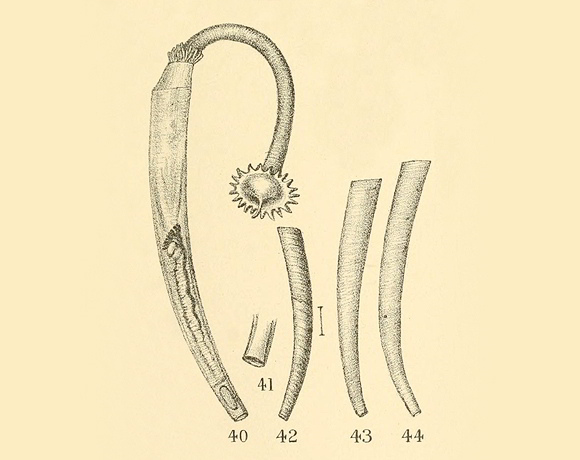
On sediments, from the infralittoral (rare) to the continental shelf and abyssal depths (3500m in Steiner & Kabat, 2004).
Original taxon: Siphonodentalium lofotense.
Above, the species in Pilsbry & Sharp: Manual of conchology… series I vol. XVII, London 1807-1808 via BHL.
« Shell rather solid, white, but little pellucid, cylindrical, smooth ; growth-striae somewhat oblique, moderately conspicuous ; form narrowly subarcuate, moderately attenuated toward the apex. Aperture nearly three times the width of apical orifice. Length as much as 6 mill. (G. O. Sars). […] Specimens from the Bay of Biscay and the Mediterranean are usually much smaller than those from northern seas (Jeffreys). »
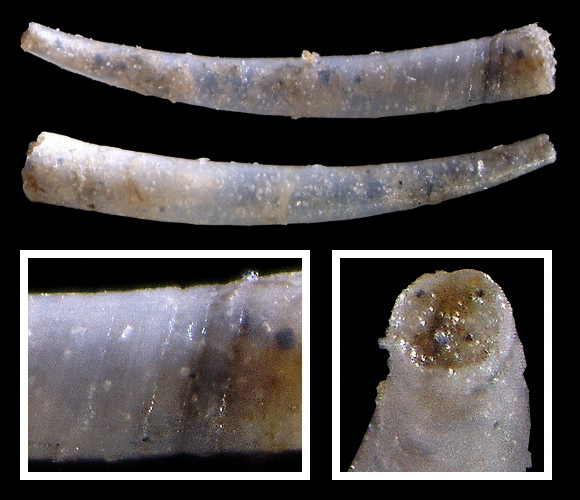
Pilsbry & Sharp: « Jeffreys remarks: “The shell may easily be passed (as it was by me) for the young Dentalium entalis ; but it is more curved and cylindrical, the mouth and corresponding lines of growth slope backwards, and the margin of the posterior orifice is regularly jagged (having two slights notches on each side), and this extremity does not form a bulbous point in the fry. One of the characters given by Sars (‘margine aperturae posterioris integro’) should be amended.” » – 450m deep, Calvi bay, NW. Corsica. 2,7mm.
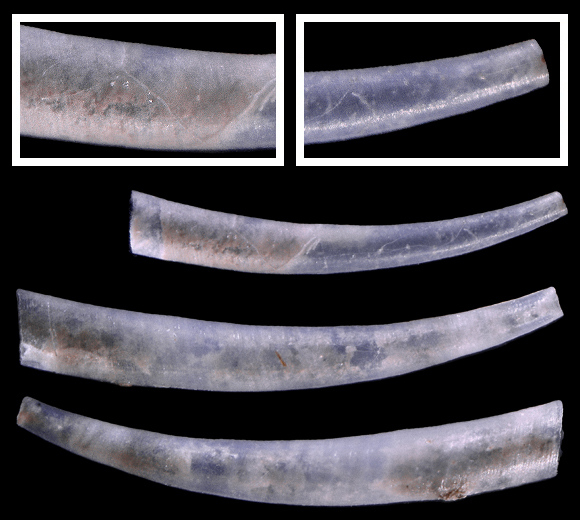
500m deep, Capo Teulada, Cagliari, S. Sardinia. 2,8-3,5mm.
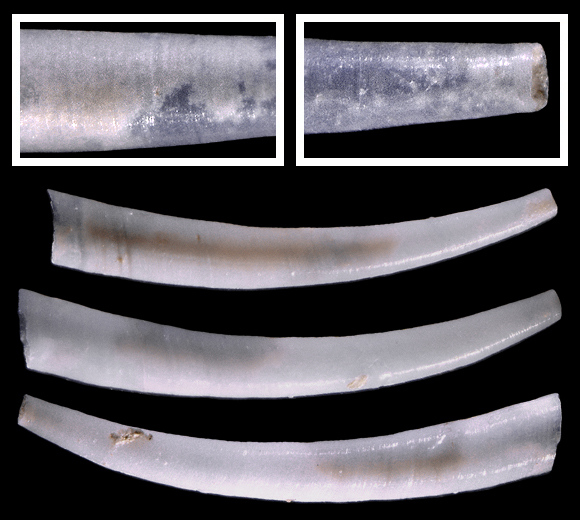
Same spot. 2,9-3,1mm.
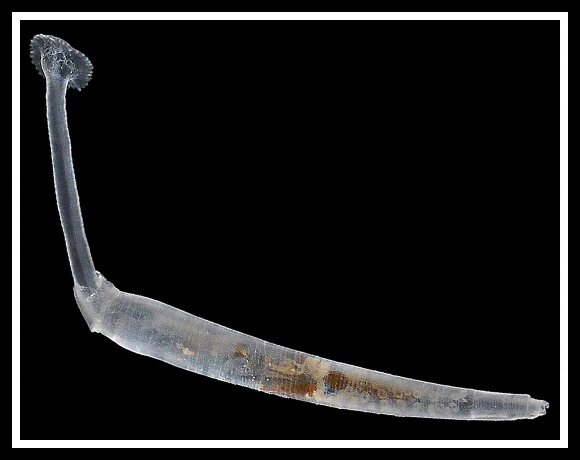
Original picture provided by P. Ugarković (HR).
– (CC BY-NC-SA) –